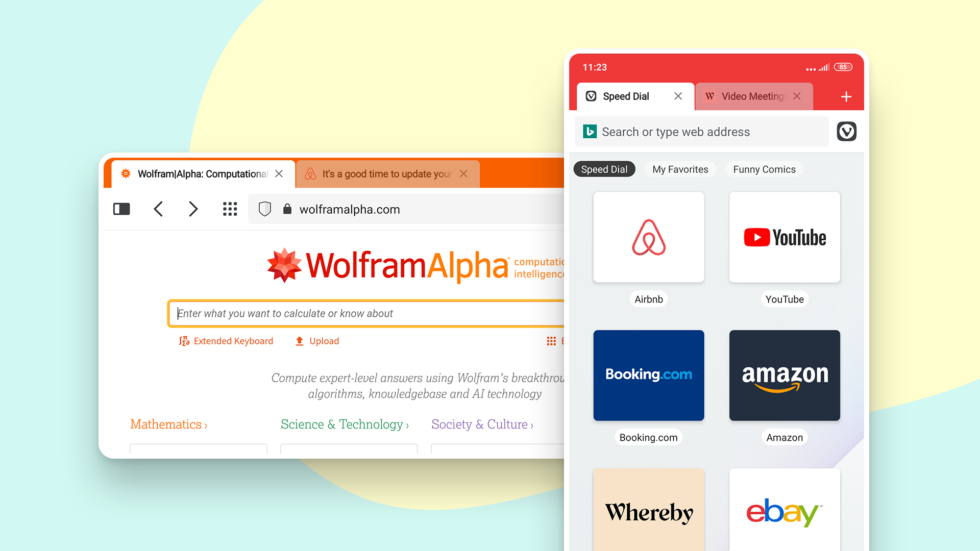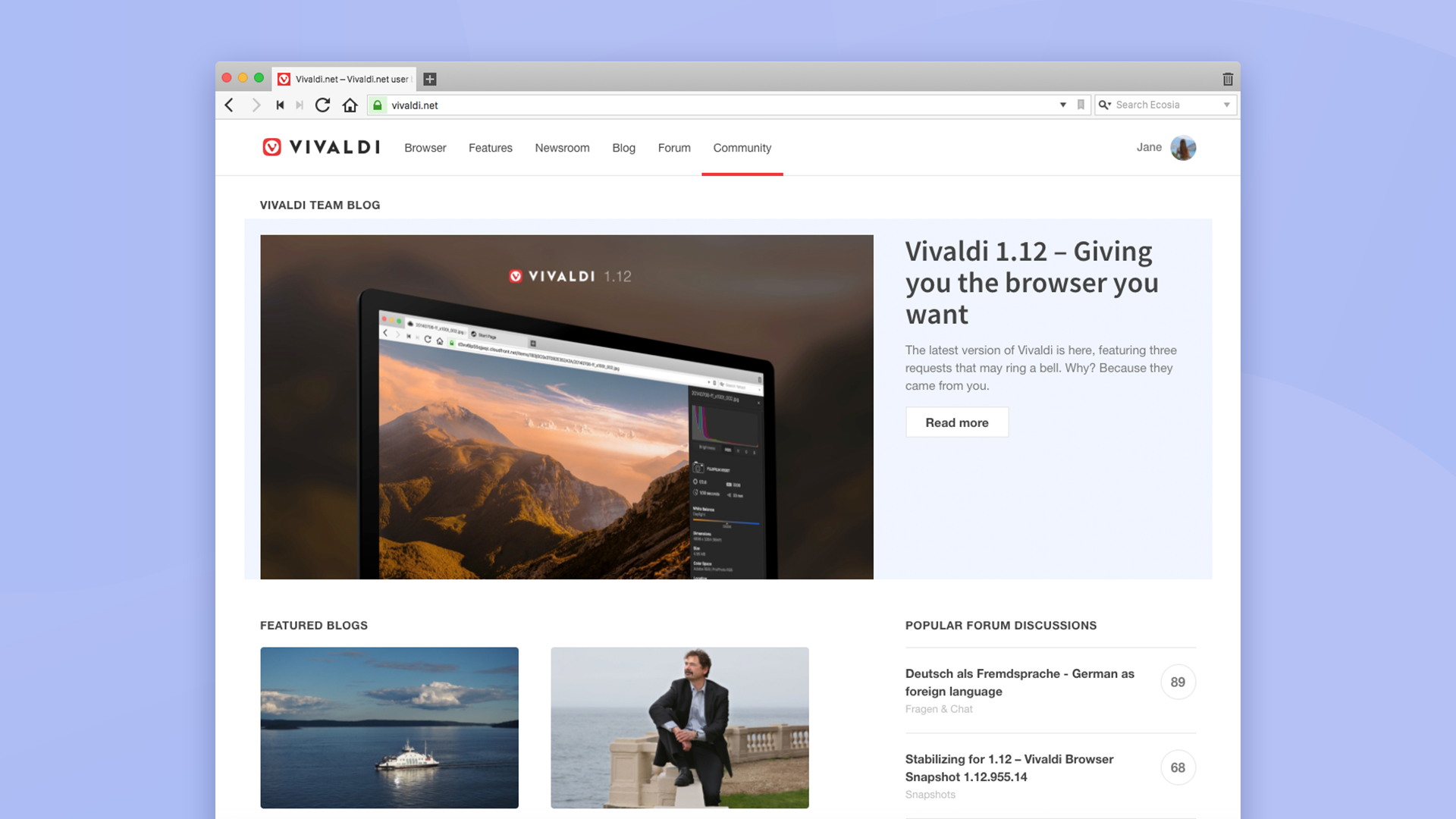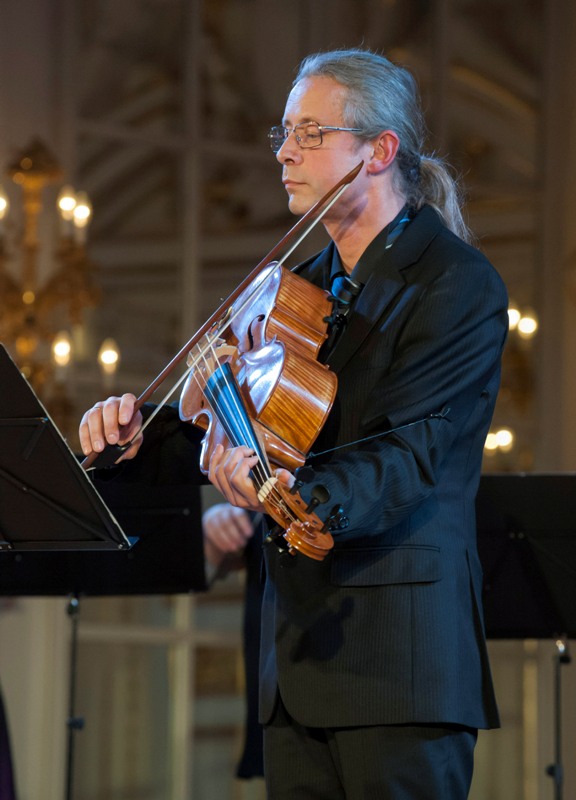Vivaldi Deutsch
- Vivaldi Deutsch
- Vivaldi Forum Deutsch
- Vivaldi Vier Jahreszeiten Deutsche Grammophon
- Vivaldi Deutsche Grammophon
- Vivaldi Auf Deutsch
- Vivaldi Deutsche Grammophon
Our editors will review what you’ve submitted and determine whether to revise the article.

Vivaldi Deutsch
Join the Vivaldi Community to connect with friends from around the world and discuss technology, the future of the web, and development of the Vivaldi Browser. Vivaldi is a freeware, cross-platform web browser developed by Vivaldi Technologies, a company founded by Tatsuki Tomita and Jon Stephenson von Tetzchner, who was the co-founder and CEO of Opera Software. Vivaldi was officially launched on April 6, 2016.
Join Britannica's Publishing Partner Program and our community of experts to gain a global audience for your work!Antonio Vivaldi, in full Antonio Lucio Vivaldi, (born March 4, 1678, Venice, Republic of Venice [Italy]—died July 28, 1741, Vienna, Austria), Italian composer and violinist who left a decisive mark on the form of the concerto and the style of late Baroque instrumental music.
Life
Vivaldi’s main teacher was probably his father, Giovanni Battista, who in 1685 was admitted as a violinist to the orchestra of the San Marco Basilica in Venice. Antonio, the eldest child, trained for the priesthood and was ordained in 1703. His distinctive reddish hair would later earn him the soubriquetIl Prete Rosso (“The Red Priest”). He made his first known public appearance playing alongside his father in the basilica as a “supernumerary” violinist in 1696. He became an excellent violinist, and in 1703 he was appointed violin master at the Ospedale della Pietà, a home for foundlings. The Pietà specialized in the musical training of its female wards, and those with musical aptitude were assigned to its excellent choir and orchestra, whose much-praised performances assisted the institution’s quest for donations and legacies. Vivaldi had dealings with the Pietà for most of his career: as violin master (1703–09; 1711–15), director of instrumental music (1716–17; 1735–38), and paid external supplier of compositions (1723–29; 1739–40).
Soon after his ordination as a priest, Vivaldi gave up celebrating mass because of a chronic ailment that is believed to have been bronchial asthma. Despite this circumstance, he took his status as a secular priest seriously and even earned the reputation of a religious bigot.
Vivaldi’s earliest musical compositions date from his first years at the Pietà. Printed collections of his trio sonatas and violin sonatas respectively appeared in 1705 and 1709, and in 1711 his first and most influential set of concerti for violin and string orchestra (Opus 3, L’estro armonico) was published by the Amsterdam music-publishing firm of Estienne Roger. In the years up to 1719, Roger published three more collections of his concerti (opuses 4, 6, and 7) and one collection of sonatas (Opus 5).
Vivaldi made his debut as a composer of sacred vocal music in 1713, when the Pietà’s choirmaster left his post and the institution had to turn to Vivaldi and other composers for new compositions. He achieved great success with his sacred vocal music, for which he later received commissions from other institutions. Another new field of endeavour for him opened in 1713 when his first opera, Ottone in villa, was produced in Vicenza. Returning to Venice, Vivaldi immediately plunged into operatic activity in the twin roles of composer and impresario. From 1718 to 1720 he worked in Mantua as director of secular music for that city’s governor, Prince Philip of Hesse-Darmstadt. This was the only full-time post Vivaldi ever held; he seems to have preferred life as a freelance composer for the flexibility and entrepreneurial opportunities it offered. Vivaldi’s major compositions in Mantua were operas, though he also composed cantatas and instrumental works.
The 1720s were the zenith of Vivaldi’s career. Based once more in Venice, but frequently traveling elsewhere, he supplied instrumental music to patrons and customers throughout Europe. Between 1725 and 1729 he entrusted five new collections of concerti (opuses 8–12) to Roger’s publisher successor, Michel-Charles Le Cène. After 1729 Vivaldi stopped publishing his works, finding it more profitable to sell them in manuscript to individual purchasers. During this decade he also received numerous commissions for operas and resumed his activity as an impresario in Venice and other Italian cities.

In 1726 the contralto Anna Girò sang for the first time in a Vivaldi opera. Born in Mantua about 1711, she had gone to Venice to further her career as a singer. Her voice was not strong, but she was attractive and acted well. She became part of Vivaldi’s entourage and the indispensable prima donna of his subsequent operas, causing gossip to circulate that she was Vivaldi’s mistress. After Vivaldi’s death she continued to perform successfully in opera until quitting the stage in 1748 to marry a nobleman.
In the 1730s Vivaldi’s career gradually declined. The French traveler Charles de Brosses reported in 1739 with regret that his music was no longer fashionable. Vivaldi’s impresarial forays became increasingly marked by failure. In 1740 he traveled to Vienna, but he fell ill and did not live to attend the production there of his opera L’oracolo in Messenia in 1742. The simplicity of his funeral on July 28, 1741, suggests that he died in considerable poverty.
After Vivaldi’s death, his huge collection of musical manuscripts, consisting mainly of autograph scores of his own works, was bound into 27 large volumes. These were acquired first by the Venetian bibliophile Jacopo Soranzo and later by Count Giacomo Durazzo, Christoph Willibald Gluck’s patron. Rediscovered in the 1920s, these manuscripts today form part of the Foà and Giordano collections of the National Library in Turin.
- born
- March 4, 1678
Venice, Italy
- died
- July 28, 1741 (aged 63)
Vienna, Austria
- notable works
- movement / style
La tempesta di mare ('The Storm at Sea'), a flute concerto in F Major (RV 433; P. 261), is the first of Six Flute Concertos, Op. 10 by Antonio Vivaldi, published in the late 1720s. La tempesta di mare may also refer to two earlier versions of the same concerto, RV 98, a concerto da camera (chamber concerto) featuring the flute, from which Vivaldi derived the concerto grosso RV 570.
La tempesta di mare may also refer to the violin concerto with the same name published in the same 1725 edition as the Four Seasons: this is however a different composition than the three flute concerto variants.
History[edit]
Vivaldi helped to bring the concerto to a mainstream form, not only by expanding on ritornello form, but by emphasizing the slow movements of concertos, which were in a two part binary form. Solo instruments that Vivaldi wrote concertos for include violin, bassoon, cello, oboe, viola d'amore, flute and mandolin.[1] He also wrote ensemble concertos (concerto grosso and/or chamber concerto), where three or more soloists participate, which number over 30 written. Vivaldi had an extensive influence on the concerto genre, helping to pioneer the structure, expanding the boundaries of the genre, and showing that any instrument could have a concerto.[citation needed]
Vivaldi's contemporaries and predecessors such as Purcell, Bach and Handel featured the flute (traverso and/or recorder) significantly in their works.[2] RV 433 was conceived as a concerto for transverse flute in D.[3] The first publication of the concerto, included as No. 1 in Vivaldi's Op. 10, VI Concerti a Flauto Traverso, was around 1728 in Amsterdam, by Michel-Charles Le Cène. The La tempesta di mare name for the concerto is given in the score.[4]
Vivaldi Forum Deutsch
Giving a musical impression of a storm was a popular theme in baroque music. For instance operas like Marin Marais' Alcyone contained famous storm scenes. Telemann wrote a secular cantata La Tempesta (The Storm), TWV 20:42, after an Italian libretto by Metastasio. Vivaldi wrote several tempesta di mare concertos.[5] Two variants of RV 433, RV 98 and RV 570, are in the chamber concerto and concerto grosso format respectively.[6] RV 98 is scored for flute, oboe, violin, bassoon, and continuo, from which Vivaldi created the RV 570 concerto grosso by adding orchestral violins to reinforce the solo oboe and violin, and a viola part doubling the bass at the upper octave.[7][8][9][10] An unrelated tempesta di mare concerto, a violin concerto in E♭ major, RV 253, is included as No. 5 in Vivaldi's Op. 8 Il cimento dell'armonia e dell'inventione.[9][11]The Four Seasons, the first four concertos of that collection, also include a few musical depictions of stormy weather.
According to Federico Maria Sardelli the chamber concerto version of La tempesta di mare, RV 98, was possibly written for Ignazio Sieber, during the time in which he worked with the composer at the Ospedale della Pietà from 1713 to 1716.[3] This means that this version of the concerto may have been the earliest flute concerto ever composed, and also the first flute piece to include the problematic high F6.[7] Sardelli's conclusions, if correct, would overturn 'the received scholarly view that, rather than writing for the recorder in the first two or three decades of the eighteenth century, then switching over to the flute, Vivaldi already preferred the flute in the 1710s and did not start writing for the recorder until the early 1720s'.[12]
Vivaldi Vier Jahreszeiten Deutsche Grammophon
Structure[edit]
The movements of the concerto are:
Reception[edit]
RV 433 is not among the five concertos Vivaldi composed for the recorder (RV 441–445). Being one of the 14 concertos Vivaldi wrote for traverso (including one for two traversos), the concerto is nonetheless often performed as a recorder concerto, like many of these other traverso concertos. Thus it is for instance included in Dan Laurin's Recorder Concertos CD.[13] There are dozens of recordings of the concerto, performed on the traverso as well as the recorder, for instance by Jean-Pierre Rampal in the 1960s,[14] by Frans Brüggen and by Barthold Kuijken with La Petite Bande.[15]
Vivaldi Deutsche Grammophon
References[edit]
- ^Sadie, Stanley 'Vivaldi, Antonio' in The New Grove Dictionary of Music and Musicians. London: 1980, pp. 31-45
- ^Sadie, Stanley, 'Recorder' in The New Grove Dictionary of Musical Instruments. London: 1984. pp. 205-215
- ^ abSardelli 2007, 138
- ^(score:) Le Cène & c.1728.
- ^Talbot, Michael. 'Dictionary' p. 183 in The Vivaldi Compendium. Boydell Press, 2011. ISBN9781843836704
- ^(score:) Dover 2002, p. 172.
- ^ abPowell 2008, 121
- ^Selfridge-Field 1978, 336
- ^ abTalbot 2001, Work-List
- ^Talbot 2004, 1021
- ^Talbot 1993, p. 121.
- ^Lasocki 2008, 496
- ^Dan Laurin and Drottningholm Baroque Ensemble. Antonio Vivaldi: Recorder Concertos. Bis, 1994
- ^Jean-Pierre Rampal with I Solisti Veneti conducted by Claudio Scimone. 'No. 1 in F major, P. 261: La tempesta di mare' in Antonio Vivaldi: The complete flute concertos. New York: CBS Masterworks, 1967. OCLC42524796
- ^Concert voor fluit en strijkorkest RV.433, op.10, nr.1 in F gr.t., 'La tempesta di mare' at www.muziekweb.nl
Sources[edit]
Score editions
- Le Cène c.1728: Vivaldi, AntonioVI Concerti a Flauto Traverso ..., Op. 10. Amsterdam: Michel-Charles Le Cène, c.1728. OCLC658705889
- Dover 2002: Vivaldi, Antonio. Six Flute Concertos Op. 10, in Full Score: With Related Concertos for Other Wind Instruments, edited by Eleanor Selfridge-Field. New York: Dover, 2002. ISBN9780486422435.
Other
- Lasocki, David. 'Vivaldi's Music for Flute and Recorder. By Federico Maria Sardelli. Translated by Michael Talbot. Burlington, VT: Ashgate in association with Istituto Italiano Antonio Vivaldi/Fondazione 'Giorgio Cini', 2007. [xxii, 336 p. ISBN9780754637141'. [Review] Notes, second series, 64, no. 3 (March 2008): 496–98.
- Powell, Ardal. 'Vivaldi's Flutes: Federico Maria Sardelli, Vivaldi's Music for Flute and Recorder, trans. by Michael Talbot (Aldershot: Ashgate, 2007)'. Early Music 36, no. 1 (February 2008): 120–22.
- Sardelli, Federico Maria. Vivaldi's Music for Flute and Recorder, translated by Michael Talbot. Aldershot: Ashgate Publishing, Ltd, 2007. ISBN075463714X.
- Selfridge-Field, Eleanor. 'Vivaldi's Esoteric Instruments'. Early Music 6, no. 3 (July 1978): 332–38.
- Talbot, Michael. Vivaldi, second edition. Master Musicians Series. London: J. M. Dent and Sons, 1993. Reprinted in paperback, Oxford and New York: Oxford University Press, 2000.
- Talbot, Michael. 'Vivaldi, Antonio (Lucio)' in The New Grove Dictionary of Music and Musicians, second edition, edited by Stanley Sadie and John Tyrrell. London: Macmillan Publishers, 2001.
- Talbot, Michael. 'Antonio Vivaldi. Six Flute Concertos, Op. 10, in Full Score: With Related Concertos for Other Wind Instruments. Edited with an introduction by Eleanor Selfridge-Field. Mineola, NY: Dover Publications, c2002. Introd., p. vii-ix; facsim. reprod., 1 p.; score, p. 1–166; the Dover edition, p. 169–76. ISBN0-486-42243-7'. Notes, second series 60, no. 4 (June 2004): 1021–24.
External links[edit]
- Recording by the San Francisco Early Music Ensemble, Voices of Music, with Hanneke van Proosdij on the recorder (official YouTube channel)
- Flute Concerto in F major, RV 433: Scores at the International Music Score Library Project
Vivaldi Auf Deutsch

Vivaldi Deutsche Grammophon
